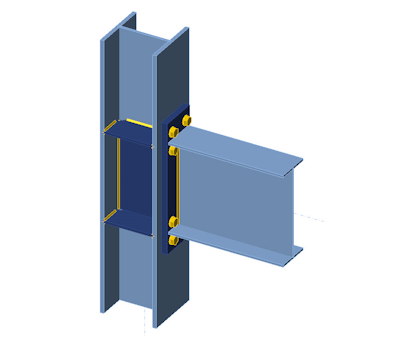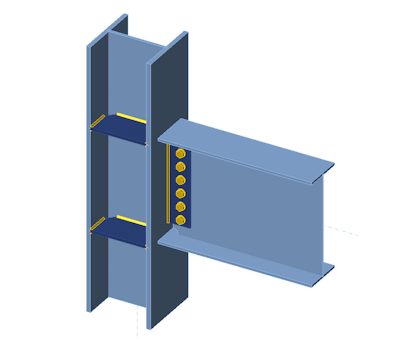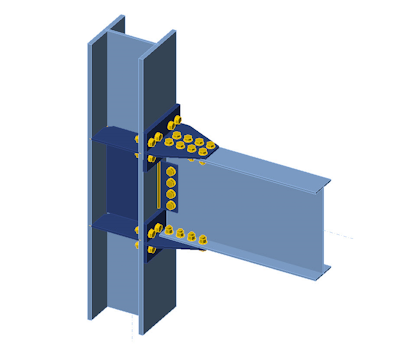Study of Prequalified Seismic Moment Connections - (AISC)
Introduction
In this study, The Ohio State University (OSU) worked to verify just how reliable IDEA StatiCa can be when analyzing different types of seismic prequalified steel connections. The results are compared against the tried and true methods: AISC equations, ABAQUS (FEA software) & the results of laboratory full scale tests.
Goal of the project
The objective of this project was to evaluate the behavior of seismic steel connections obtained from the IDEA StatiCa software package considering load resistance, rotation capacity, and moment-rotation response.
For this purpose, four different prequalified rigid steel connections that can be used as part of an intermediate moment frame (IMF) and special moment frame according to AISC 358 (2016), and one moment connection to be used as part of an ordinary moment frame according to AISC 341 were selected.
Reduced beam section (RBS) moment connection
End plate moment (EPM) connection
Welded unreinforced flange-welded web (WUF-W) moment connection
Welded unreinforced flange-bolted web (WUF-B) moment connection
Verification project structure
- For each connection type, one experimental study was chosen from the literature, and one of the tested specimens was selected as a baseline model, and five additional variation specimens were either selected from the same test or created to be examined.
- Following the requirements given in AISC 341 (2016), AISC 358 (2016), and AISC 360 (2016), the design checks were performed for each connection type, and flexural capacities were calculated.
- The same specimens were modeled and analyzed in IDEA StatiCa, and their moment capacities and failure modes were calculated.
- For the baseline model of each connection type, moment rotation analysis was performed using IDEA StatiCa, and the calculated moment plastic rotation curve was compared with the experimentally measured moment plastic rotation relationship given in the test report.
- To compare the IDEA StatiCa results with the traditional FEA approach, the equivalent ABAQUS model was developed for the baseline model of each connection type. Stress and strain distributions, as well as moment rotation relationships, were compared.
- The results obtained from the tests, AISC design calculations, IDEA StatiCa, and ABAQUS were evaluated, and recommendations were provided.
Summary
The study conducted by OSU demonstrates that IDEA StatiCa's approach is a dependable tool for calculating moment capacities and predicting failure modes across different steel connections. In particular, the research showed an average deviation of 2-13% between calculations derived from IDEA StatiCa and those from AISC guidelines. This difference, at its peak, can be attributed to the nuances of weld bonding types and the assumptions made regarding the plastic hinge locations.
The results of the study solidified the software's ability to offer precise insights into structural behavior, emphasizing its utility in the engineering world.








